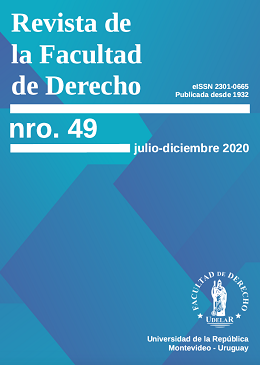The non-Common Residence: A New Connection Element in the Taxation of the Personal Income Tax?
A Research Aimed at the Solutions Adopted in Portugal and Spain
Abstract
Economic difficulties have led the European Union to adopt new competitiveness strategies, such as the so-called “European 2020 Strategy” (EC, 1997; 1997a; 1998; 2010). This strategy has been extended to the fiscal policy of several Member States, whereby they
have been adopting innovative fiscal solutions to increase investment and their competitiveness, such as the taxation ofnon-habitual residents (Catarino, 2016). In this research we evaluate the evolution of the concept of residence in personal income tax as a way to attract qualified residents and investment. We have systematized the regime of non-habitual residents by comparing the characteristics between Portugal and Spain and have pursued to determine whether their tax regimes are actually more attractive than the general scheme and, if so, under what terms. We have determined the existence of differences that may influence the choice between one or the other by the interested parties. We conclude that there is no evolution in the concept of residence adopted, that a greater attractiveness of the mentioned above regime is effective, through the application of lower rates of income tax and that its’ similarity does not allow the conclusion ofthe supremacy ofa regime against the other.
Downloads
References
Bastos, Frederico Silva; Estellita, Heloísa (2015). O intercâmbio de informações tributárias e a cooperação internacional no brasil. Revista Direito GV, 11(1), 13-35.
Blaikie, N. (2010). Designing Social Research – The Logic of Anticipation. Cambridge Press.
Bryman, A. (2004). Social Research Methods, 2nd Edition. Oxford University Press.
Borges, R. da Palma; Sousa, P. Ribeiro (2009). O novo regime dos residentes não habituais. Revista Fiscalidade, (40), 5-57.
Catarino, J. R. (2000). Problemas e perspectivas de mudança nos sistemas tributários contemporâneos. Revista Tributária e de Finanças Públicas, (18), 337-364.
Catarino, J. R. (2001). A Concorrência Fiscal Entre Regiões no Quadro Europeu - A Dialéctica Entre a Regionalização e o Tributo. Lisboa: Cadernos de Ciência e Técnica Fiscal, Ministério das Finanças n.º 401.
Catarino, J. R. (2003). Globalização e Capacidade Fiscal Contributiva. Revista de História e Teoria das Ideias, 16(17), 437-460.
Catarino, J. R. (2009). Para Uma Teoria Política do Tributo (2ª Edição). Lisboa: Cadernos de CTF, nº 184.
Catarino, J. R. (2011). Globalização e competitividade fiscal internacional: Limites e proposições. Revista NOMOS, (2), 181-195.
Catarino, J. R. (2016). Finanças Públicas e Direito Financeiro (3ª Ed.). Almedina.
Catarino, J. R.; Fonseca, J. (2013). Sustentabilidade financeira e orçamental em contexto de crise global numa Europa de moeda única. Revista Sequência, (34), 21-51.
Catarino, J. R.; Guimarães, V. (2015). Lições de Fiscalidade: Gestão e Planeamento
Fiscal Internacional. Almedina.
Clavijo, A. (2013). Propuestas para la reforma del Régimen de Impatriados Español desde una visión de derecho comparado. Revista Crónica Tributaria, (148), 195-213.
Comissão Europeia (1997). A package to tackle harmful tax competition in the European Union. Comunicação da Comissão ao Conselho e ao Parlamento Europeu, de 5 de Novembro de 1997, COM (97) 564, final.
Comissão Europeia (1997). Plano de Acção para o Mercado Único para 1997. Comunicação da Comissão ao Conselho, de 30 de Abril de 1997, COM (97), 184.
Comissão Europeia (2014). Estado atual da estratégia Europa 2020 para um crescimento inteligente, sustentável e inclusivo. Comunicação da Comissão ao Conselho, de 5 de Março de 2014, COM (2014) 130 final.
Comunicação da Comissão (2020). Europa 2020 - Estratégia para um crescimento inteligente, sustentável e inclusivo. http://eur-lex.europa.eu/LexUriServ/LexUriServ.do?uri=COM:2010:2020:FIN:PT:PDF.
Faustino, M. (2015). O imposto sobre o rendimento das pessoas singulares. Lições de
Fiscalidade: Gestão e Planeamento Fiscal Internacional. Almedina.
Flores, R. (2015). Las rentas de trabajo en el Impuesto sobre la Renta de las Personas Físicas. Dykinson, Estudio jurídico tributario.
Gouveia, F. H. C. e Afonso, L. E.(2013). Uma análise das formas de remuneração dos sócios por meio do planejamento tributário. Revista de Administração Mackenzie, (14), 69-98.
Junqueira, M. de O. (2015). O nó da reforma tributária no Brasil (1995-2008). Revista Brasileira de Ciências Sociais, (30), 93-113.
OECD (1998). Harmful Tax Competition: An Emerging Global Issue. OECD Publishing.
OECD (2014). Base Erosion and Profit Shifting (BEPS). OECD Publishing. Pohlmann, M. C. e Iudícibus, S. (2010). Relação entre a tributação do lucro e a estrutura de capital das grandes empresas no Brasil. Revista de Contabilidade e finanças, (21), 1-25.
Relatório CCE (1998). A Fiscalidade na União Europeia. Relatório sobre a Evolução dos Sistemas Fiscais, COM (98), 846.
Ribes, A. (2015). Expatriate Taxation in Spain: Some Reflections for Debate. Revista Intertax, (43), 460-473.
Tanzi, V. (2006). Death of an Illusion? Decline and Fall of High Tax Economies. Politeia.
Tanzi, V. (2006a). Making Policy Under Efficiency Pressures; Globalization, Public Spending, and Social Welfare, in The New Public Finance. Inge Kaul and Pedro Conceição.
Tanzi, V. (2007). Fiscal Policy in the Future: Challenges and Opportunities. Berlin: Presentation at the Conference on “Fiscal Policy Challenges in Europe”, March 22–23.
YIN, R. (2009). Case Study Research – Design and Methods, Fourth Edition. Sage.
Copyright (c) 2020 ojsAdmin ojs

This work is licensed under a Creative Commons Attribution 4.0 International License.
This journal provides open access to its content, based on the principle that providing the public with free access to research helps a greater global exchange of knowledge
Revista de la Facultad de Derecho. Creative Commons Reconocimiento 4.0 Internacional License.










